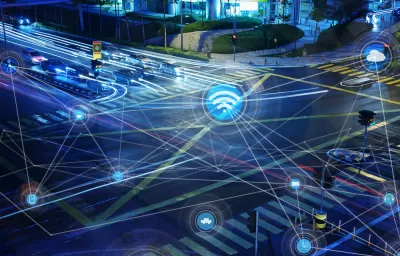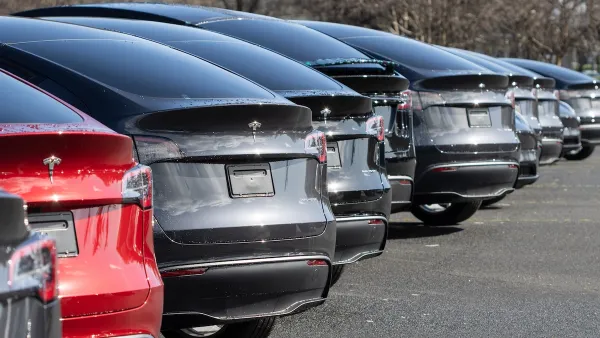As an act of resistance, artist James Bridle used salt to draw a set of lines on a road that would, in theory, hold an autonomous vehicle in place.

James Bridle's simple "trap" would do little to deter human drivers, but it could prove paralyzing to a computer designed to read markings on the road. The piece is meant to call attention to the very new considerations we'd face in a world of self-drivers.
Describing the trap, Beckett Mufson writes, "In the language of road markings, the dotted white lines on the outside say, 'Come On In,' but the solid white line on the inside says, 'Do Not Cross.' [...] If a self-driving car is designed to read the road, what happens when the language of the road is abused by those with nefarious intent?"
Bridle wants to question corporate narratives through his art, while at the same time avoiding a purely reactionary approach. Says Bridle, "I don't see why cab drivers of the future shouldn't be chalking white lines on side streets to derail self-driving Ubers which are putting them out of work, and I also think we need more eyes and hands on the tools which are shaping all of our futures."
FULL STORY: Meet the Artist Using Ritual Magic to Trap Self-Driving Cars

Planetizen Federal Action Tracker
A weekly monitor of how Trump’s orders and actions are impacting planners and planning in America.

Map: Where Senate Republicans Want to Sell Your Public Lands
For public land advocates, the Senate Republicans’ proposal to sell millions of acres of public land in the West is “the biggest fight of their careers.”

Restaurant Patios Were a Pandemic Win — Why Were They so Hard to Keep?
Social distancing requirements and changes in travel patterns prompted cities to pilot new uses for street and sidewalk space. Then it got complicated.

Platform Pilsner: Vancouver Transit Agency Releases... a Beer?
TransLink will receive a portion of every sale of the four-pack.

Toronto Weighs Cheaper Transit, Parking Hikes for Major Events
Special event rates would take effect during large festivals, sports games and concerts to ‘discourage driving, manage congestion and free up space for transit.”

Berlin to Consider Car-Free Zone Larger Than Manhattan
The area bound by the 22-mile Ringbahn would still allow 12 uses of a private automobile per year per person, and several other exemptions.
Urban Design for Planners 1: Software Tools
This six-course series explores essential urban design concepts using open source software and equips planners with the tools they need to participate fully in the urban design process.
Planning for Universal Design
Learn the tools for implementing Universal Design in planning regulations.
Heyer Gruel & Associates PA
JM Goldson LLC
Custer County Colorado
City of Camden Redevelopment Agency
City of Astoria
Transportation Research & Education Center (TREC) at Portland State University
Camden Redevelopment Agency
City of Claremont
Municipality of Princeton (NJ)





























